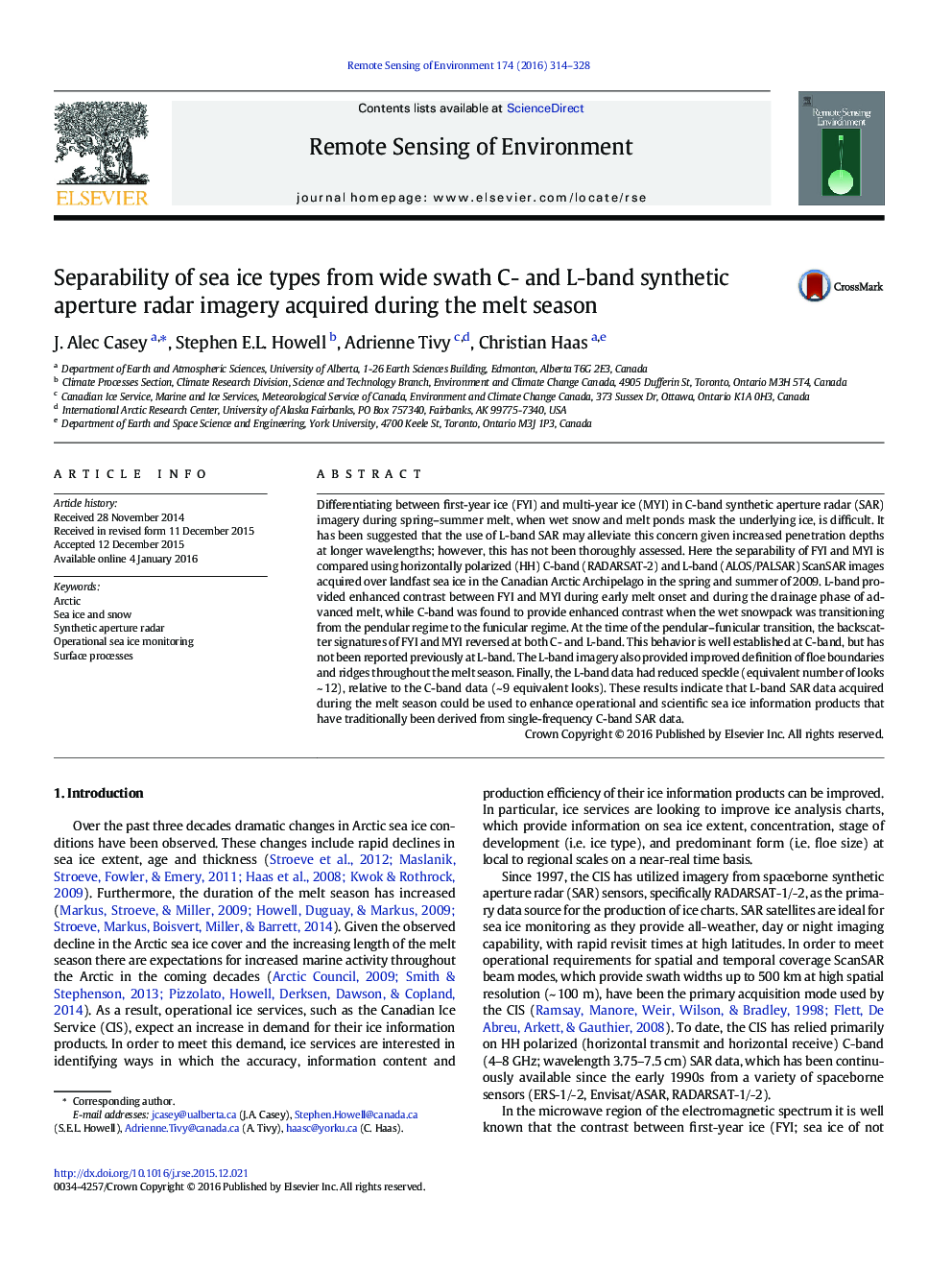| Article ID | Journal | Published Year | Pages | File Type |
|---|---|---|---|---|
| 6345590 | Remote Sensing of Environment | 2016 | 15 Pages |
Abstract
Differentiating between first-year ice (FYI) and multi-year ice (MYI) in C-band synthetic aperture radar (SAR) imagery during spring-summer melt, when wet snow and melt ponds mask the underlying ice, is difficult. It has been suggested that the use of L-band SAR may alleviate this concern given increased penetration depths at longer wavelengths; however, this has not been thoroughly assessed. Here the separability of FYI and MYI is compared using horizontally polarized (HH) C-band (RADARSAT-2) and L-band (ALOS/PALSAR) ScanSAR images acquired over landfast sea ice in the Canadian Arctic Archipelago in the spring and summer of 2009. L-band provided enhanced contrast between FYI and MYI during early melt onset and during the drainage phase of advanced melt, while C-band was found to provide enhanced contrast when the wet snowpack was transitioning from the pendular regime to the funicular regime. At the time of the pendular-funicular transition, the backscatter signatures of FYI and MYI reversed at both C- and L-band. This behavior is well established at C-band, but has not been reported previously at L-band. The L-band imagery also provided improved definition of floe boundaries and ridges throughout the melt season. Finally, the L-band data had reduced speckle (equivalent number of looks ~Â 12), relative to the C-band data (~Â 9 equivalent looks). These results indicate that L-band SAR data acquired during the melt season could be used to enhance operational and scientific sea ice information products that have traditionally been derived from single-frequency C-band SAR data.
Related Topics
Physical Sciences and Engineering
Earth and Planetary Sciences
Computers in Earth Sciences
Authors
J. Alec Casey, Stephen E.L. Howell, Adrienne Tivy, Christian Haas,
